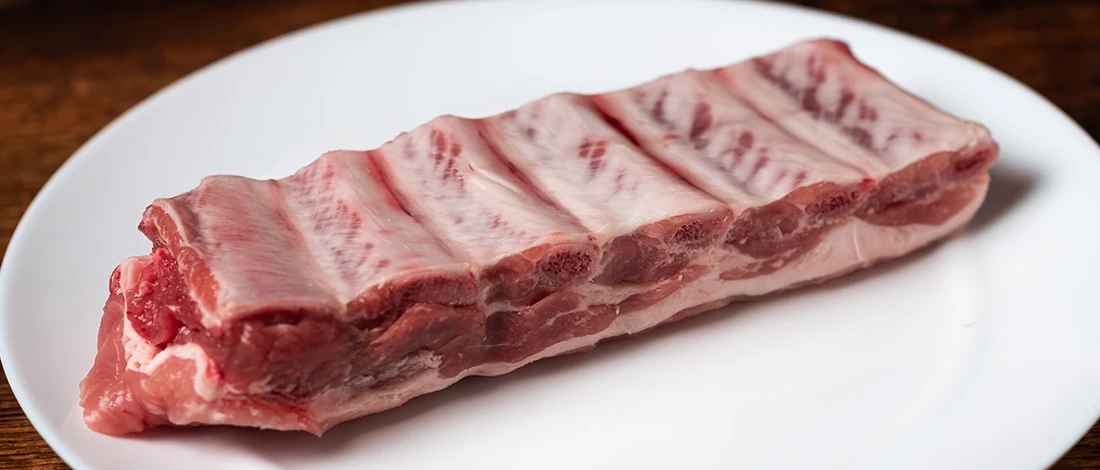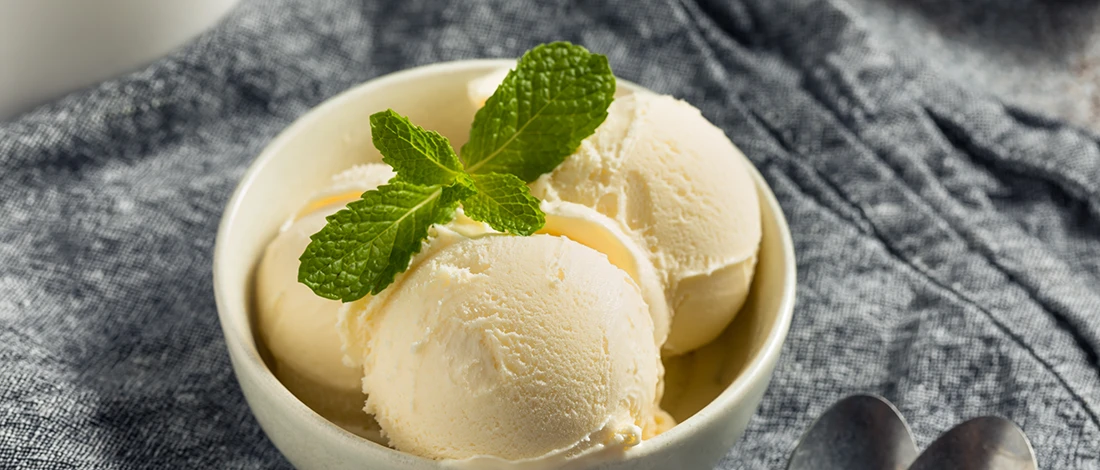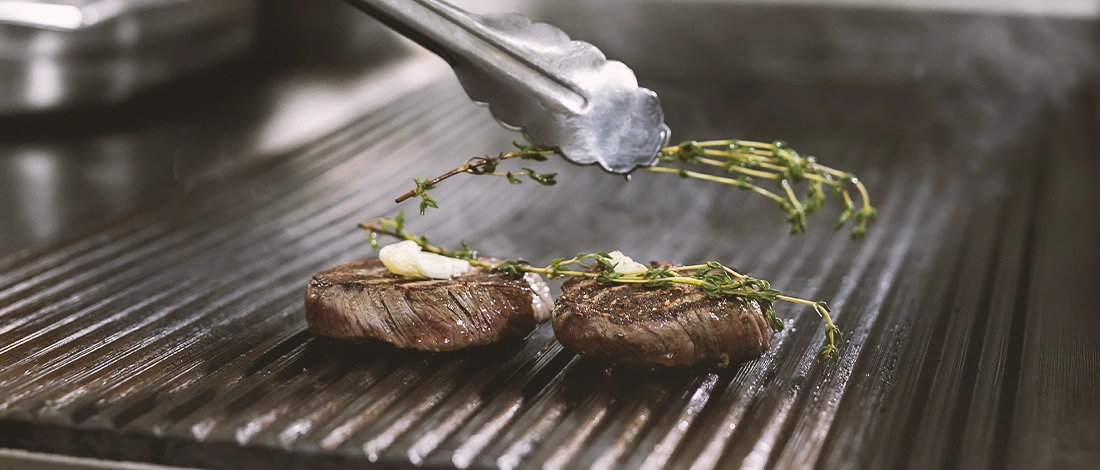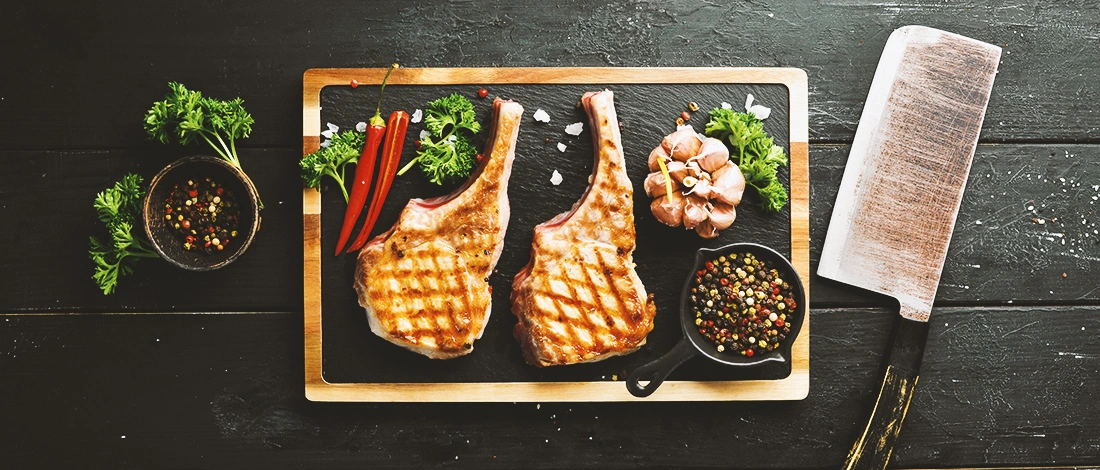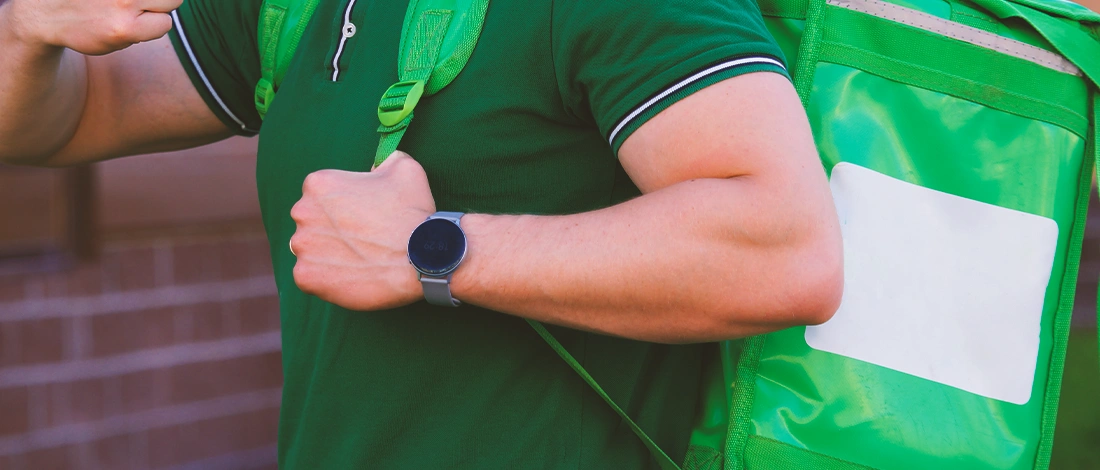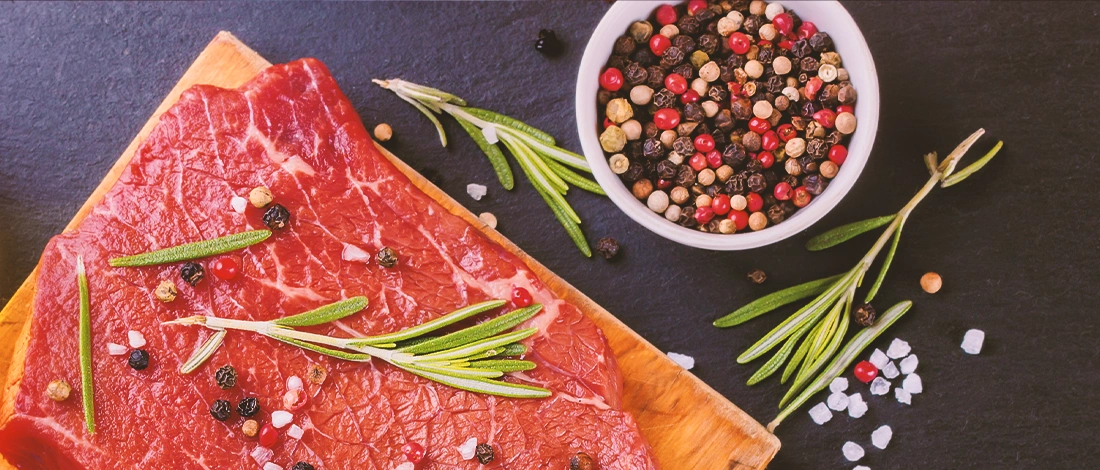If you're a meat lover like me, you've probably stored meat in the freezer for too long and had to deal with ice crystals a time or two.
This is a concern I get from most of my friends who freeze meat. I spent the past few weeks researching this phenomenon to understand it better. I also consulted with food safety experts to get clarification on the matter.
I'll share everything you need to know about this phenomenon.
Quick Summary
- Ice crystals on meat indicate that it's dry and frozen and not that fresh.
- A frosty appearance on the meat is an indication that its freezer burned.
- You can vacuum-seal your meat and freeze it at the right temperature to prevent freezer burn.
What Do Ice Crystals on Meat Signify?
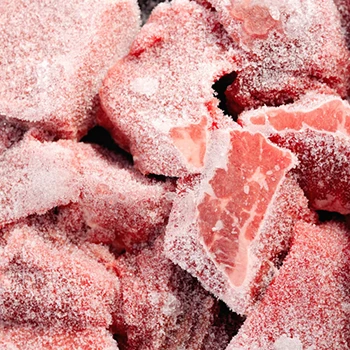
Ice crystals on meat signify that your meat is frozen, dried, and has lost moisture. The ice crystals form when the molecules of water in meat freeze and can indicate the quality and freshness of the meat.
When exposed to colder/freezing conditions in the freezer, water molecules within the cells of frozen meat expands and form ice crystals. These ice crystals expand cell membranes and let water flow out of the meat.
For this reason, meat that has been frozen for an extended length of time frequently has ice crystals on it.
The size of ice crystals also indicates the quality of the meat you have. The grade quality of the meat increases with decreasing crystal size [1].
The tinier crystals imply that the flesh is fresh, less watery, and has more nutrients and protein per unit of weight.
On the other hand, large ice crystals in meat signify that the meat is not as fresh as you would want and is of poorer grade because it has more water per unit weight.
Large ice crystals can also alter the texture of food or meat, making it tougher to chew and less tender.
Ice crystals in meat also indicate that the meat is stale or has been kept too long in the freezer. Meats frequently become gray-brown and may appear rough or leathery.
It is usually better to avoid eating meat if the surface of it is covered with a lot of large ice crystals. If there are only a few ice crystals, the meat is most likely still safe to consume.
"Bacteria may have started to develop if large ice crystals form on the surface of the meat; this impacts the texture and flavor of the meat."
- Natalie Olsen, Registered Dietician
When Does Freezer Burn Occur?
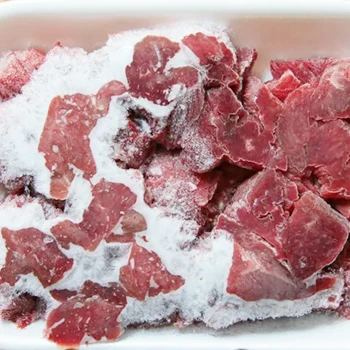
Freezer burn occurs when frozen foods are subjected to cold, dry air; they dehydrate as the surface layer loses moisture [2]. One of the most obvious indicators of freezer burn is the production of ice crystals on the exterior of food, giving it a frosty appearance.
The frost or ice crystals make the frozen food dry and stiff; occasionally, it appears tarnished or wrinkled.
The food may taste bad and lose micronutrients due to freezer burn. Improper packing of meat, incorrect freezing temperature, and prolonged freezing can develop freezer burn on food.
Cold, dry air is more likely to infiltrate meat that has not been firmly wrapped, has been left exposed, or has been stored in freezing temperatures.
This causes dried-out areas, impacting the appearance, flavor, and texture of meat, veggies, and other frozen food items.
Even though it can be safe to eat freshly frozen foods, you're likely to notice a change in flavor or texture that makes freezer-burned food less attractive.
When handling frozen food, I trim off the visible freezer-burned sections before cooking and use strong seasonings and marinades to amp up the flavor.
It would be best to freeze food in the freezer for a shorter time if you want to avoid freezer burn.
7 Tips to Freeze Meat to Avoid Freezer Burn

While eating frozen food is safe, freezer burn affects meat quality by altering its taste and texture. Here are seven tips for freezing meat correctly and avoiding freezer burn.
1. Use the Right Freezing Temperature
Maintaining the right temperature in your freezer can help prevent freezer burn by allowing the meat to freeze faster, resulting in smaller ice crystals that are far less likely to cause freezer burn.
When freezing meat, ensure your freezer is set to the right temperature - zero or below. It's also essential to read through your freezer manual and learn how the parts work so that you can troubleshoot any issues.
2. Limit Freezing Time
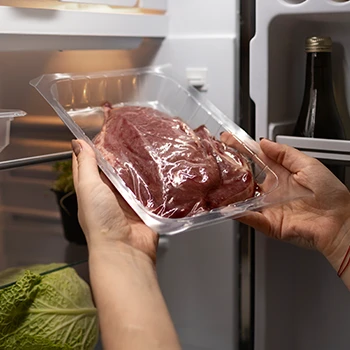
Meat that is kept in the freezer for a more extended period is more prone to get freezer burn.
This is because moisture escapes from the frozen meat tissues under cold temperatures, leaving behind dry patches and ice crystals.
To prevent ice crystals from forming on your frozen food, store it in the freezer for a shorter time. Also, ensure you consume frozen food sooner.
3. Vacuum Seal Your Meat
Another excellent way to prevent freezer burn is vacuum sealing.
When you freeze meat in a regular Ziploc bag or plastic wrap, air remains in the bag. During the meat freezing process, the trapped air condenses and creates an ice crystal on the surface.
These ice crystals not only cause freezer burn but can also dry up and toughen your meat.
Also Read: Vacuum-Sealed Meat Shelf Life
4. Don't Leave the Freezer Door Open
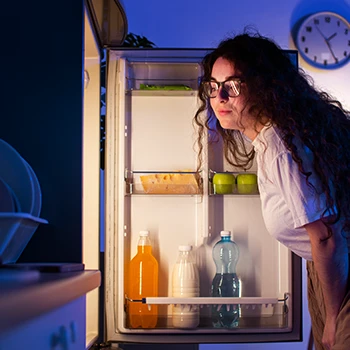
Leaving your freezer door wide open for too long can have the temperature in the unit to fluctuate, intensifying ice crystallization and resulting in freezer burn.
After grocery shopping, I always unpack everything on the counter close to the freezer. This way, I'll only open the freezer once and quickly stack everything before closing.
Also, keeping your freezer well-organized may assist in reducing how long you keep the door open because you'll have the things you use daily in close reach.
5. Refrigerate Before Freezing
Putting hot meals directly into the freezer raises the freezer's temperature almost as quickly as it lowers the temperature of the meal.
Not only that, it will damage any food surrounding the hot food, creating a heated spot with warm air on the exterior for freezer burn.
I recommend refrigerating your food for 2 to 3 hours before placing it in the freezer to prevent ice crystals and allow long-term preservation.
Also Read: How to Freeze Dry Meat?
6. Don't Overstuff the Freezer
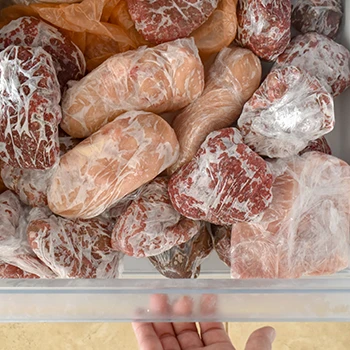
Frozen foods behave as ice in a cooler, helping to chill extra foods that you add to the freezer.
So, if you overload the freezer, you hamper the even flow of cold air, resulting in warm air packets.
Your freezer should ideally be roughly three-quarters full. I always utilize freezer shelves to add extra space for air circulation underneath my frozen meat.
7. Use the Right Freezing Containers
Plastic containers, glass containers or jars, and freezer bags are all excellent choices for storing frozen food.
If you can't get these, make sure you are using freezer bags rather than ordinary storage bags; these are made of thinner plastic and are not intended for use in the freezer.
Related Articles:
FAQs
Should I Reject Frozen Meat With Ice Crystals on the Packaging?
You should not reject frozen meat with ice crystals on the packaging if there is no sign of spoilage. While freezer burn may affect the quality of the meat in terms of texture and flavor, it doesn't make the meat unsafe to eat.
Do Ice Crystals Mean Freezer Burn?
The presence of ice crystals on the surface of frozen food, including meat, may be an indicator of freezer burn. You can tell by the size of the crystals; the larger the crystals, the more the burn.
Can Freezer Burn Cause Food Poisoning?
Freezer burn cannot cause food poisoning. While freezer-burned meat may taste less good, it won’t make you sick.
Reference:
- https://www.ncbi.nlm.nih.gov/pmc/articles/PMC8620417/
- https://ift.onlinelibrary.wiley.com/doi/10.1111/j.1541-4329.2009.00072.x


